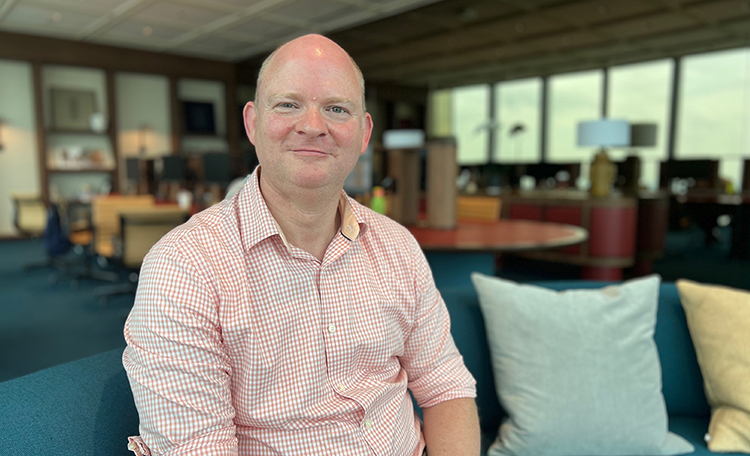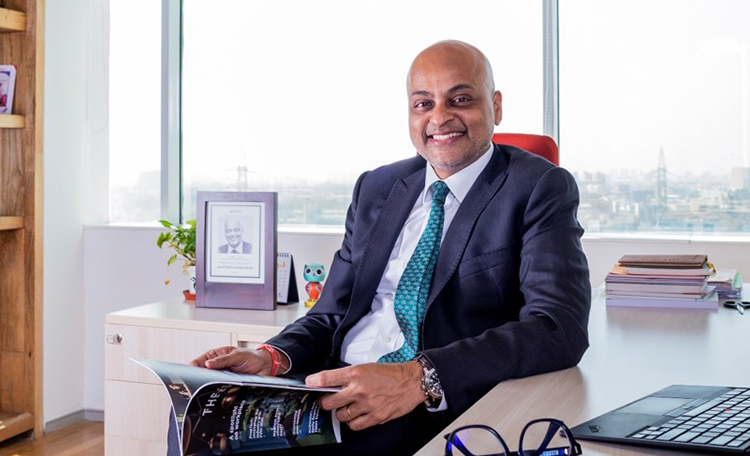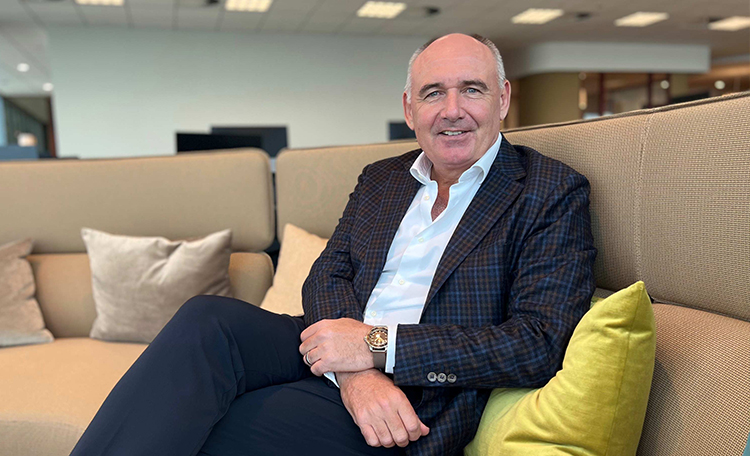How are occupiers adjusting their portfolios post-pandemic?
Q. Nick perhaps we should start with a brief overview of what Integrated Portfolio Management actually is?
Integrated Portfolio Management, or IPM, is effectively the intersection of transaction management, data management and portfolio strategy. We work with multinational clients on both a transactional and a strategic level. The transaction side is ensuring the corporates know when their lease expiries are going to happen and what opportunities might be available. Portfolio strategy is about using data, analytics and insight to make tactical decisions around, for example, what kind of space in terms of size/area might be needed and where that space should be located.
Q. And how has your work changed, post-pandemic?
Most office-based companies have discovered that they don't need as much space as they used to. And I think this is an answer they would have arrived at eventually if we hadn't had the pandemic – it would have just taken longer for the change to happen.
Q. What are some of the return-to-office trends you are seeing from country to country?
We are seeing that when you have more of a cultural trend towards being in the office, you’re likely to see a higher physical presence. Japan and China both have almost pre-pandemic return to office rates while occupancy in Australia is relatively low.
If we look at Singapore, the return-to-office rate is between 60 and 70 percent on a day-to-day basis. The reasons for this could include Singapore’s size – it is quite small, with shorter commute times than some larger cities. Singapore also has relatively new building stock, which, combined with new office fit-outs by many corporates, could make offices more attractive as a place from which to work. Maybe it is because of people’s desire for collaboration. Perhaps it is because a lot of senior management sit in Singapore and, if they are back in the office, there is a sense that the employees should also be in attendance. Or maybe people are concerned about economic headwinds and want to be seen so they can be counted. In truth, it’s a mixture of these things, plus other factors, and the value placed on each varies between markets. There is definitely no one-size-fits-all.
Q. It sounds like a period of quite intense change. How has this impacted your work?
The trends we’re seeing now were here before the pandemic, they have just accelerated. Offices are still here. They still need managing. Leases are still leases. Real estate is still real estate. But how corporates use that space is now the biggest question to answer.
From an IPM perspective, it's for us to try and interpret the real estate requirements for businesses in an environment where they may not be quite sure what the future holds.
Alongside colleagues in Total Workplace and Project & Development Services, we help to provide solutions on how to interpret the real estate requirements for businesses in an environment where they may not be quite sure what the future holds.
A consistent baseline is building in flexibility and adaptability. Flexibility on tenure – owned, leased, short term, long term. Adaptability on whether legacy property can be used for something else.
Q. What advice are you most frequently issuing to clients in this market?
First and foremost is to make sure your real estate data is in order so that payments and straightforward lease negotiations can be transacted efficiently. Next, if you haven’t engaged with Human Resources (HR) or your other business stakeholders – do so. A company’s real estate should be a bricks-and-mortar reflection of the business, not a standalone function. You want to have a combined taskforce of HR, relevant business units, and business leaders inform real estate decisions in order to get them right.
As well as your business needs, the local market conditions will inform your real estate decisions. This is where you need to have data that explains what is happening currently, as well as forecast data. And each market is different. In Singapore for example, supply is tight and rents are increasing, so whatever occupiers need to do, they should do it now. In markets where there is good supply and rent is at an equilibrium, there is less need to move early – although there could be value in locking away extra space at lower rent for a longer tenure.
Q. Besides market data, what other data is helpful to have for successful portfolio management?
Lease data is essential, but you would be surprised how many companies do not have it in order. I would also say HR data is essential. Headcount and demographics will inform decisions on the size and location of space. Knowing the function of employees will help determine how the space should be organised – what are they doing? Are they in external meetings all day? Or are they office-based? From there, you can move to the big grey area – how people are interacting with the space, and how often.
There are different ways of capturing this data – computer logins, building entry records, sensors etc. But one of the difficulties is that the privacy laws around this type of information vary from country to country, so very few global MNCs have a single approach.
It’s also important to remember that, while data is key, human analysis of that data is also vital. Sensors may show all desks being occupied, but perhaps they are being occupied by interns or external consultants. This is why a cross-disciplinary team is vital – the more touchpoints you can have with the business, the better informed your real estate decisions will be.
“Most office-based companies have discovered employees can work remotely. And I think this is an answer they would have arrived at eventually without the pandemic – it just would have taken longer for the change to happen.”
Q. Have you seen a significant change in location strategy as a result of hybrid working?
The fundamentals of location strategy have not changed, but there is so much more nuance. The decision on where to locate can cover a broader geographical area than before, and the size of the space needed might be based on different requirements than previously.
If you consider a fast-growing business, one that might be doubling in size every 12 months. Pre pandemic, they may not have had much control over their location strategy because the priority was simply to find the space needed to accommodate their growth – it became increasingly difficult to get ahead of the curve. Now, with more acceptance of hybrid, growth can be managed within the existing portfolio, flex space and remote working.
Generally, the pandemic showed that there was less need for office employees to be in the office to maintain output. What we are now seeing is occupiers re-defining how they use their real estate. This has led to companies considering more flexible models of occupation or alternative business operating models such as business process outsourcing for certain tasks.
Q. What are the biggest challenges you're hearing from your clients?
Internally, it’s understanding what their business requirements are, and justifying the spend on real estate – both of which are dependent on the rate of return to office, whether mandated or organic.
There are real capital expenditure challenges – and real estate is just one demand on capital. The current volatility in the macroeconomic and geopolitical environment means that many businesses may have less confidence in their growth forecasts. Complicating this, even when headcount growth is anticipated, there is now a question of whether this headcount requires physical space.
Real estate is very expensive. If people aren’t using it, it’s hard to justify the cost. Over the last six months we have seen company leaders asking about their real estate, ‘What is our opportunity to either terminate it or to re-develop it?’. Cost continues to be a primary driver.

Cushman & Wakefield’s Asia Pacific Head of Integrated Portfolio Management for Global Occupier Services, Nick Seaton.
Q. What do you anticipate the next two years might look like from a corporate real estate perspective?
Businesses are always assessing opportunities and risks. In a real estate sense, the risk could be that they may not hold enough space, or that they see rents going up beyond pre-pandemic levels. Or maybe there is opportunity because the market has softened.
There's a lot of change at a corporate level post-pandemic as businesses have said, ‘This is not working for us,’ or ‘This is not working for us in that market’.
We've seen examples of businesses refocusing on their core objectives and disposing of other divisions. Often, it’s another large company acquiring those divisions, so there is potentially a change to the real estate footprint of both companies.
What we’ll probably see in the next 12 to 18 months as a result of the macroeconomic environment is increased mergers and acquisitions activity. And as businesses begin to come together or de-merge, we will be looking at what happens to portfolios and cultures as a result.
Nick Seaton is Senior Director, Head of Integrated Portfolio Management, Asia Pacific for Cushman & Wakefield’s Global Occupier Services business. Global Occupier Services delivers real estate solutions that are aligned to clients’ business strategies and goals, from reducing operational costs to enhancing the engagement and productivity levels of their workforce.







